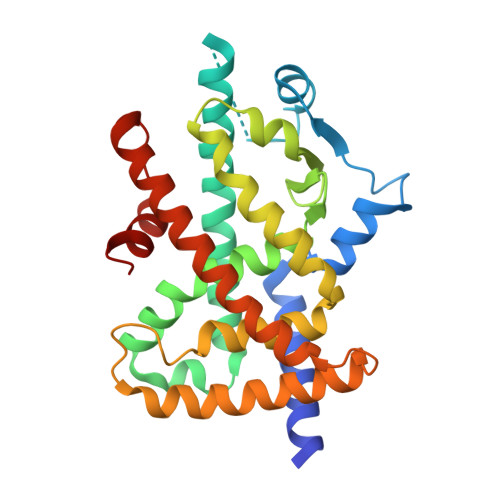Design and Synthesis of alpha-Aryloxyphenylacetic Acid Derivatives: A Novel Class of PPAR alpha/gamma Dual Agonists with Potent Antihyperglycemic and Lipid Modulating Activity
Shi, G.Q., Dropinski, J.F., McKeever, B.M., Xu, S., Becker, J.W., Berger, J.P., MacNaul, K.L., Elbrecht, A., Zhou, G., Doebber, T.W., Wang, P., Chao, Y.-S., Forrest, M., Heck, J.V., Moller, D.E., Jones, B.A.(2005) J Med Chem 48: 4457-4468
- PubMed: 15974597
- DOI: https://doi.org/10.1021/jm0502135
- Primary Citation of Related Structures:
1ZEO - PubMed Abstract:
The synthesis and structure-activity relationships of novel series of alpha-aryloxyphenylacetic acids as PPARalpha/gamma dual agonists are reported. The initial search for surrogates of the ester group in the screen lead led first to the optimization of a subseries with a ketone moiety. Further efforts to modify the ketone subseries led to the design and synthesis of two new subseries containing fused heterocyclic ring systems. All these analogues were characterized by their "super" PPARalpha agonist activity and weak or partial agonist activity on PPARgamma in PPAR-GAL4 transactivation assays despite their similar binding affinities for both receptors. The cocrystal structures of compounds 7 and rosiglitazone with PPARgamma-LBD were compared, and significant differences were found in their interactions with the receptor. Select analogues in each subseries were further evaluated for in vivo efficacy. They all showed excellent anti-hyperglycemic efficacy in a db/db mouse model and hypolipidemic activity in hamster and dog models without provoking the typical PPARgamma-associated side effects in the rat tolerability assay.
Organizational Affiliation:
Departments of Medicinal Chemistry, Merck Research Laboratories, P.O Box 2000, Rahway, New Jersey 07065-0900, USA. [email protected]















